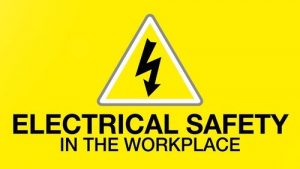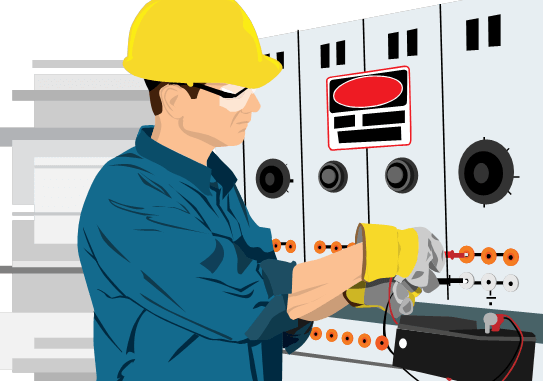 Electricity is accepted as a source of power without much thought to the hazards encountered. Some employees work with electricity directly. This is the case with engineers, electricians, electronic technicians and power line workers. Others, such as office workers and salespeople work with it indirectly. OSHAs electrical standards address this serious workplace hazard which exposes employees to such dangers as electric shock, electrocution, fires and explosions. The objective of the standards is to minimize the potential hazards by specifying designcharacteristics of safety in use of electrical equipment and systems
Electricity is accepted as a source of power without much thought to the hazards encountered. Some employees work with electricity directly. This is the case with engineers, electricians, electronic technicians and power line workers. Others, such as office workers and salespeople work with it indirectly. OSHAs electrical standards address this serious workplace hazard which exposes employees to such dangers as electric shock, electrocution, fires and explosions. The objective of the standards is to minimize the potential hazards by specifying designcharacteristics of safety in use of electrical equipment and systems
OBJECTIVES
Upon completion of the lesson, participants will be able to:
* Describe four types of injuries that may result from contact with electricity.
* List the three main electrical hazards that may be encountered at a worksite.
* Discuss at least three methods of protection from electrical hazards.
* Describe the function of a ground fault circuit interrupter (GFCI).
* Name at least three warning signs or clues that an electrical hazard exists.
* Electrical safety procedures
* Improve recognition of electrical safety hazards
OUTLINE
1. General Information
a. Special hazards of electricity
* Electrical Shock
* Electrical Burns
* Electrical Fires
* Only Qualified Workers may work on electrical equipment
* Electricity causes 10% of job related deaths
2. How Electricity works
1. Conductors
2. Insulators
3. Grounding
3. Definitions
1. Qualified Employees Special Training
2. Unqualified Employees Awareness Training Not allowed to work on electrical equipment
4. Types of Electrical Hazards
1. Working on energized (hot) circuits
2. Loose connections
3. Frayed or missing insulation
4. Missing ground prongs on plugs
5. Water and electricity dont mix
6. Damaged power tools
7. Ungrounded equipment
8. Improper use of extension cords
5. Electrical Protection
1. Electrical Safety Rules
2. Lockout Tagout
3. Properly grounded electrical circuits
4. Ground fault protection near water sources
5. Insulated power tools
6. Electrically rated Personal Protective Equipment
7. Proper housekeeping
8. Dont overload circuits
METHODE
Presentation
Discussion
Case Study
Evaluation
Instructor by : Sukarni




